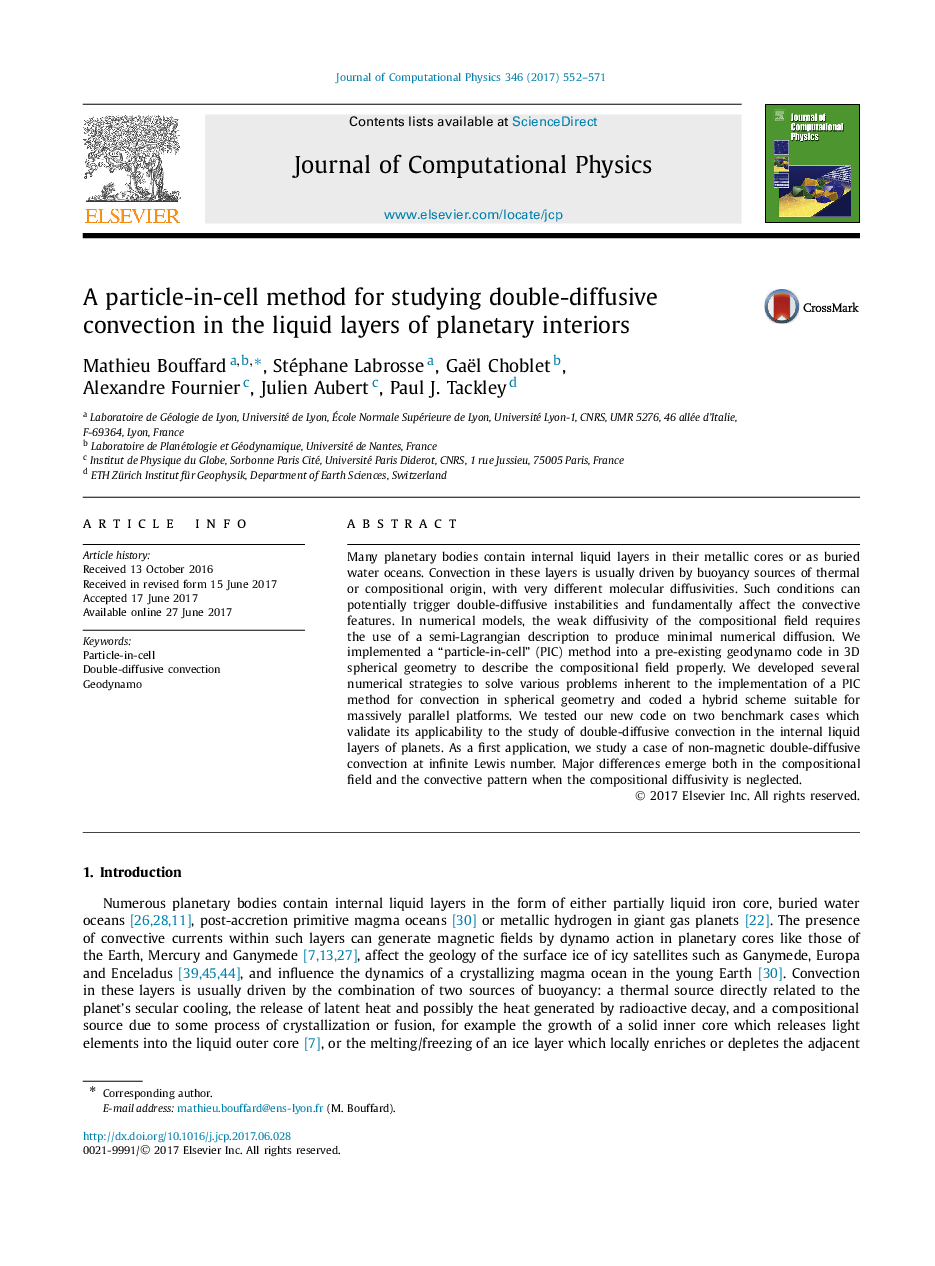| Article ID | Journal | Published Year | Pages | File Type |
|---|---|---|---|---|
| 4967274 | Journal of Computational Physics | 2017 | 20 Pages |
Abstract
Many planetary bodies contain internal liquid layers in their metallic cores or as buried water oceans. Convection in these layers is usually driven by buoyancy sources of thermal or compositional origin, with very different molecular diffusivities. Such conditions can potentially trigger double-diffusive instabilities and fundamentally affect the convective features. In numerical models, the weak diffusivity of the compositional field requires the use of a semi-Lagrangian description to produce minimal numerical diffusion. We implemented a “particle-in-cell” (PIC) method into a pre-existing geodynamo code in 3D spherical geometry to describe the compositional field properly. We developed several numerical strategies to solve various problems inherent to the implementation of a PIC method for convection in spherical geometry and coded a hybrid scheme suitable for massively parallel platforms. We tested our new code on two benchmark cases which validate its applicability to the study of double-diffusive convection in the internal liquid layers of planets. As a first application, we study a case of non-magnetic double-diffusive convection at infinite Lewis number. Major differences emerge both in the compositional field and the convective pattern when the compositional diffusivity is neglected.
Related Topics
Physical Sciences and Engineering
Computer Science
Computer Science Applications
Authors
Mathieu Bouffard, Stéphane Labrosse, Gaël Choblet, Alexandre Fournier, Julien Aubert, Paul J. Tackley,
